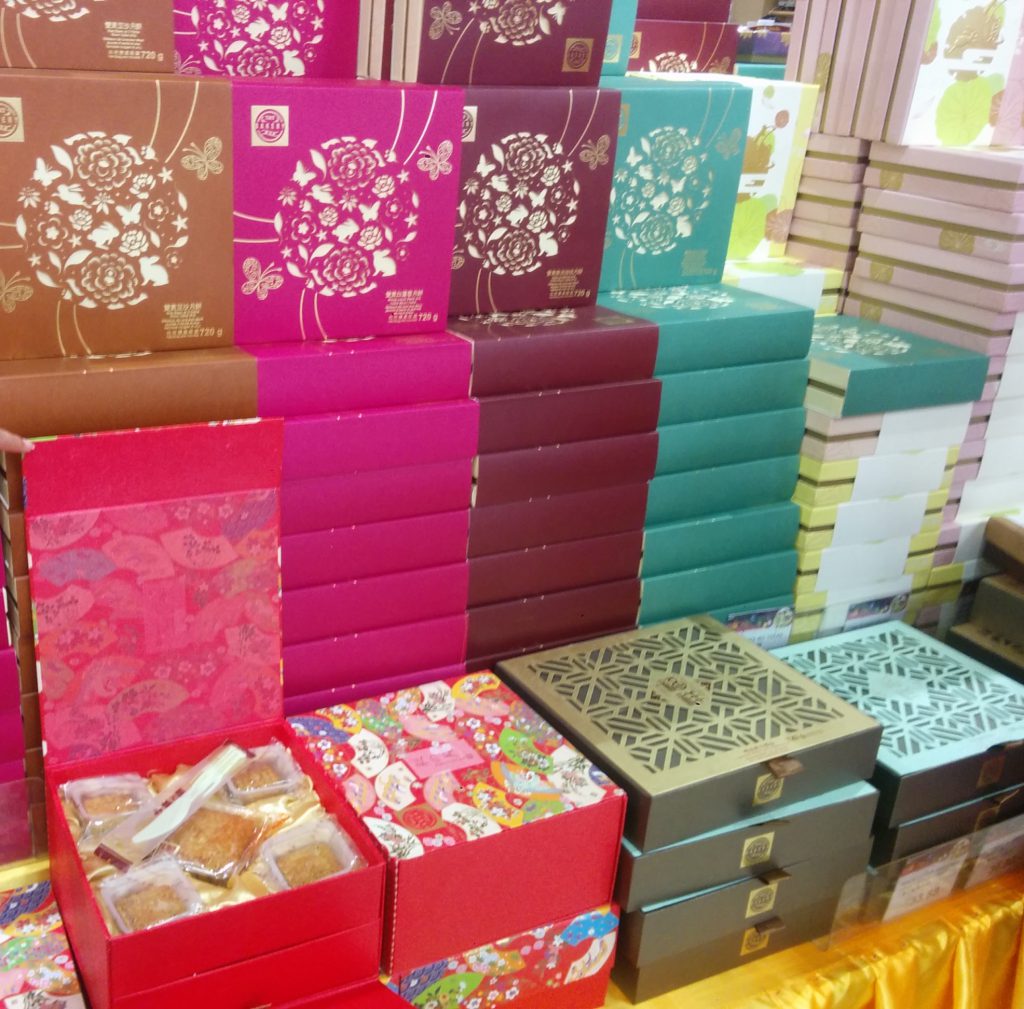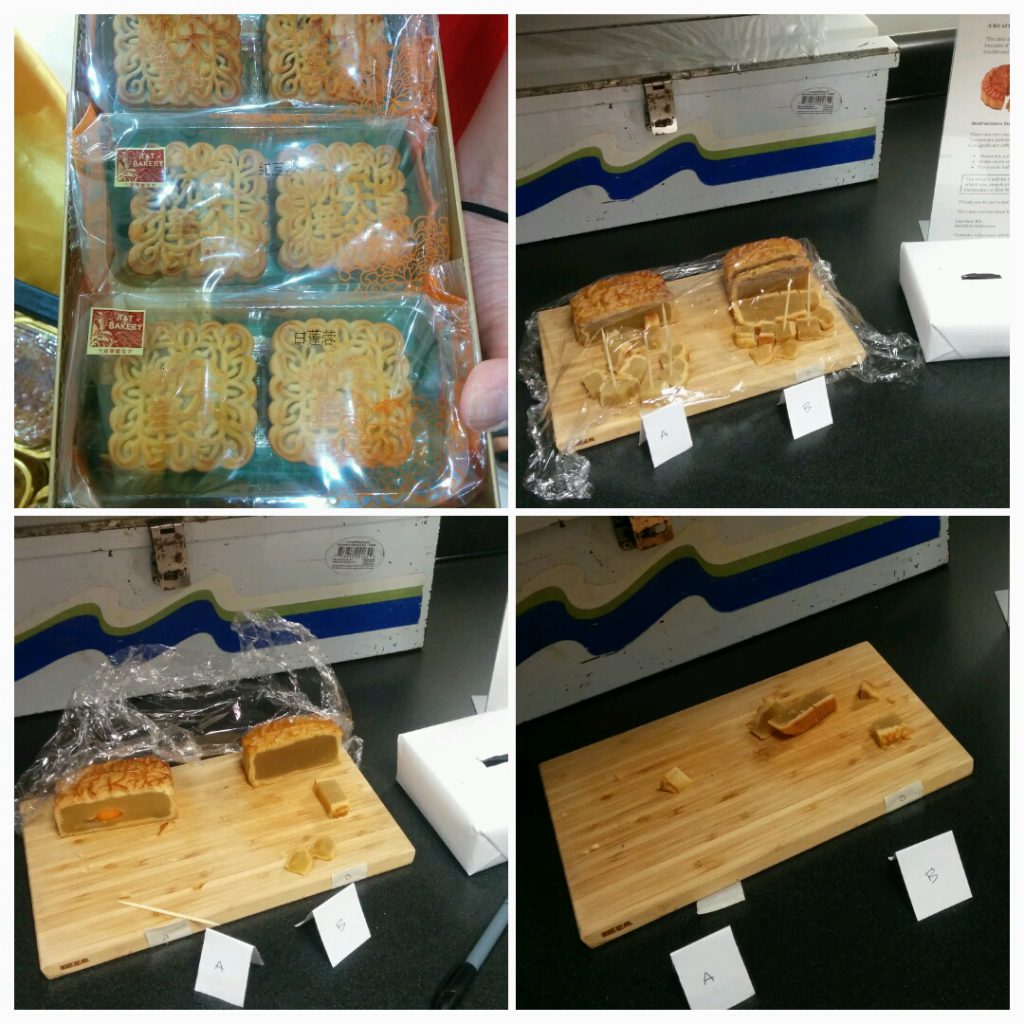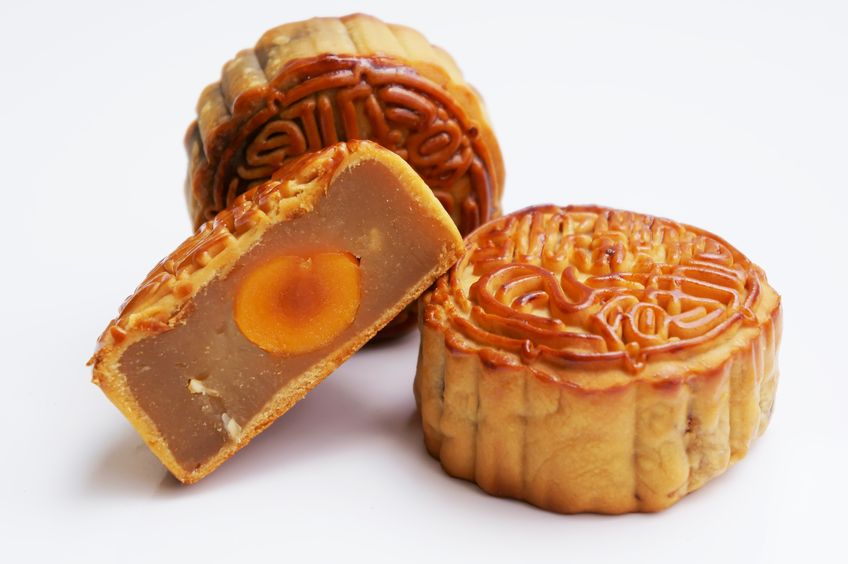The mid-Autumn festival, which is the second biggest Chinese festival after Chinese New Year, also known as the moon festival just passed. It’s also called the moon or mooncake festival because it takes place when the moon is the largest and the brightest and is also when traditional mooncakes are eaten.
Mooncakes come in various flavours (e.g. taro, matcha and nuts) but the most common ones are filled with white lotus seed or red bean paste. They may also have a salted duck egg yolk inside. Mooncakes are usually eaten as small wedges with tea.
Last week, I was shopping at my local T&T supermarket when I came across an amazing display of mooncakes. There were gorgeous box sets of mooncakes and some were quite elaborate. Amongst the store display of mooncakes, I saw some mooncakes that were labeled “less sugar”. Being curious, I looked at the ingredients to see what the difference was – sweetened with maltitol (a sugar alcohol) instead of sugar. I have known about low sugar chocolates being sweetened with sugar alcohols but not mooncake. It got me thinking – how much different does it taste compared to regular mooncakes?
I had been wanting to do a taste test at my new work place for quite some time (it is a bit of a thing for me, after all) and seeing that people there are really knowledgeable about food, I figured that this would be the perfect opportunity.
I bought a less sugar mooncake and a regular mooncake and put them out for people to sample. I chose the same type of mooncake (filled with white lotus seed) and same brand (T&T’s store brand) and labelled them A (the mooncake sweetened with maltitol) and B (the mooncake sweetened with sugar) for people to try.

Interestingly, when I tried the mooncakes I didn’t notice a huge difference between the two but I could tell that mooncake B was sweeter and less grainy. But I don’t think I really would have noticed the differences that much unless they were side by side.
However, my coworkers (primarily the baking and pastry instructors) could totally taste a difference. Most of them voted for B without any hesitation. It’s obvious that they have a much more attune sense of taste than me. They picked up floral notes, different intensities of flavour, a smoother texture and the differences in colour right away (but then again, they are trained to pay attention to detail).
I asked them to vote for the mooncake they preferred and to indicate why. After three days, I revealed the results.
- 79% of people preferred mooncake B
- 21 % of people preferred mooncake A
In the comments, some of the reasons why people preferred mooncake B included:
- a darker colour
- softer/smoother texture
- a more fruity, floral and peanut like taste
- no funny/bitter aftertaste

However, despite the fact that mooncake B was sweetened with sugar, mooncake A, which was sweetened with maltitol has some appealing characteristics from a nutrition standpoint.
Maltitol has 75-90% the sweetness of sugar (which people noticed) and only provides half the calories compared to sugar. In the body, maltitol does not raise blood sugar levels the same way that sugar does.
As a result, mooncake A had significantly less calories compared to mooncake B (about half) and contains a lot less sugar (9g vs. 25g). Mooncake A also had less fat, cholesterol and sodium compared to mooncake B. As a product that is marketed to people who are watching their sugar intake (i.e. people with diabetes) there is definitely a group of people out there who would be interested in trying mooncake A as an alternative.
In fact, some of the taste testers who preferred mooncake A liked the fact that it didn’t taste as sweet. But are the nutritional benefits are worth the difference in taste?
It really depends.
Some people may prefer a taste that is less sweet, plus the drop in calories and sugar/carbohydrate is significant which makes mooncake A very appealing for people who may be watching their sugar intake. However, mooncake B did have a sweeter taste, smoother texture and more intense flavour so if you grew up eating mooncakes and are used to a certain taste and texture, mooncake A probably won’t cut it.
It really comes down to personal preference. I have to admit that mooncake A was quite acceptable.
However, for me having grown up on mooncakes, I personally would choose B. I am too used to a certain taste. But to each their own.
